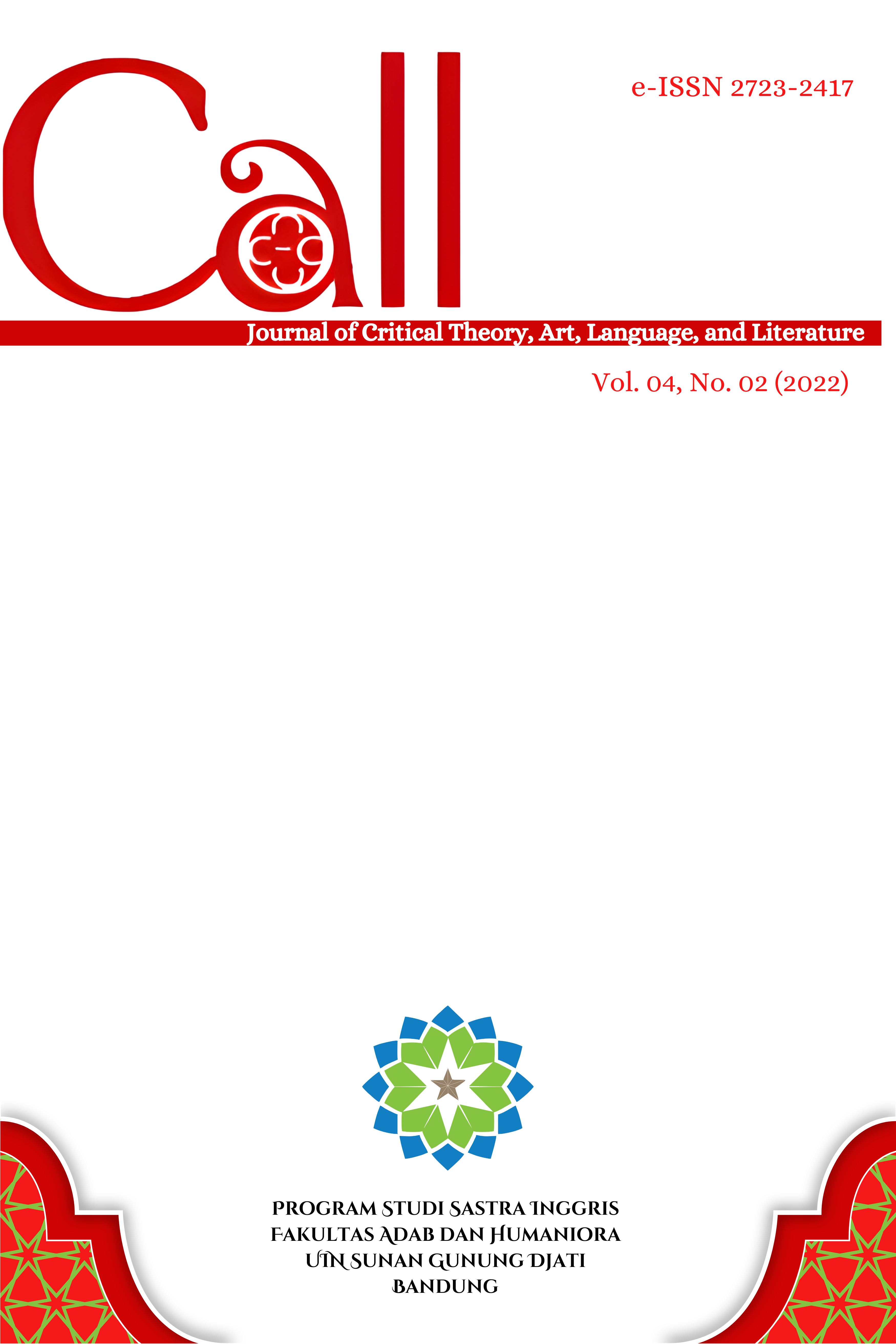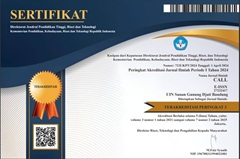FLOUTING MAXIM IN EMMA WATSON’S “BEING 30 AND HAPPILY SINGLE†BRITISH VOGUE INTERVIEW
DOI:
https://doi.org/10.15575/call.v4i2.16998Abstract
This study was done to find out more about how a person talks. Conversations between two or more people are usually inseparable from mistakes, uncooperative actions and often exceed expectations. Therefore, an observation in an interview between Paris Lee and Emma Watson is intended to examine the flouting maxim in the speeches made. This research uses qualitative methods with Grice’s supporting theories cooperative principle and flouting maxim. Several data are included in the flouting maxim, namely four data flouting maxim of quantity, three data flouting maxim of quality, four data flouting maxim of manner, and two data flouting maxim relation. From the data analysis, it can be known that the flouting maxim arises when one of the participants, Watson and Paris, insert implied meaning into their speech until they were not cooperative during the interview.
Â
Keywords: flouting maxim, cooperative principle, utterance, conversation, interview
References
Arikunto, S. (1998). Prosedur Penelitian Suatu Pendekatan Praktek. Jakarta: Rineka Cipta.
Cresswell. (2008). Educational Research.
Cutting, J. (2002). Pragmatics and Discourse. London: Routledge.
Esra and Afriana. (2020). Flouting Maxim in "Wonder Woman" Movie. Linguistic, English Education and Art (LEEA).
Grice, H. P. (1975). Logic and Conversation. Syntax and Semantics 3: Speech Acts, 41-58.
Hidayat, F. M. (2015). The Study of Implicature Used by the Host and Jaya Suprana in â€Kick Andy Showâ€;kelirumologi episode. Brawijaya University.
Jauhari, H. (2015). Pedoman Penulisan Karya Ilmiah. Bandung: Pustaka Setia.
Kunjana, R. (2005). Kesantunan Imperatif Bahasa Indonesia . Jakarta: Erlangga.
Kushartanti. (2005). Pesona Bahasa : Langkah awal memahami linguistik. Jakarta: Gramedia Pustaka Utama.
L. R. Horn, Gregory Ward. (2008). The Handbook of Pragmatics. Wiley-Blackwell.
Lestari, N. (2019). An analysis of flouting maxims in conversation
speaking of the main character in the movie of Home Alone 2 "Lost In New York" By John Hughes. Journal of English Pedagogy, Linguistics, Literature, and Teaching, 1-11.
Levinson, S. C. (1983). Pragmatics. Cambridge: Cambridge University Press.
M. Kurniati & S. Hanidar. (2018). The Flouting of the Gricean Maxims in the Movies Insidious and Insidious 2. LEXICON Volume 5, 65-76.
Novianingrum, D. (2015). Conversational Implicature on ABC Interview Between Barbara Walters and Syrian President Bashar Al-Assad. Syarif Hidayatullah State Islamic University.
Nuringtyas, S. (2018). Flouting Maxim Analysis on Dialogue of Characters in Pitch Perfect Movie. Surakarta: Universitas Muhammadiyah Surakarta.
Rofa Marlisa, Didin Nurrudin Hidayat. (2020). The Analysis of Flouting Maxim in Good Morning America (GMA) Talkshow. Englisia: Journal of Language, Education and Humanities, 132-142.
Vickie A. Lambert, D. R., & Clinton E. Lambert, P. R. (2012). Qualitative Descriptive Research: An Acceptable Design. Pacific Rim International Journal of Nursing Research.
Wardaugh, R. (1985). An Introduction to sociolinguistic. USA: Blackwell Publishing.
Downloads
Published
Issue
Section
Citation Check
License
Authors who publish in CALL agree to the following terms:
- Authors retain copyright and grant the journal right of first publication with the work simultaneously licensed under Attribution-ShareAlike 4.0 International (CC BY-SA 4.0) License that allows others to share the work with an acknowledgment of the work's authorship and initial publication in this journal.
- Authors are able to enter into separate, additional contractual arrangements for the non-exclusive distribution of the journal's published version of the work (e.g., post it to an institutional repository or publish it in a book), with an acknowledgment of its initial publication in this journal.
- Authors are permitted and encouraged to post their work online (e.g., in institutional repositories or on their website) prior to and during the submission process, as it can lead to productive exchanges, as well as earlier and greater citation of published work (See The Effect of Open Access).




